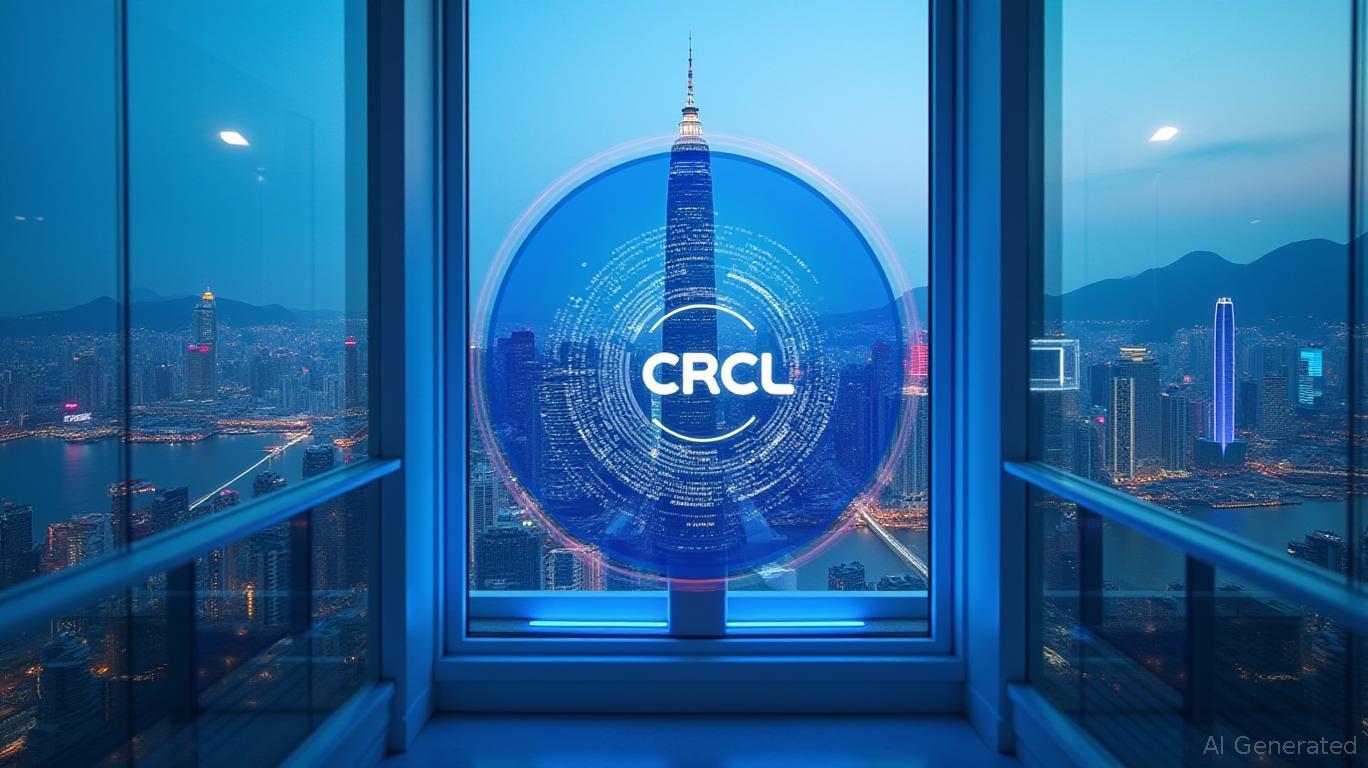Circle's NYSE Debut and Hong Kong's Regulatory Shift: A New Dawn for Stablecoin Infrastructure
The convergence of regulatory clarity and geopolitical realignment has positioned stablecoin infrastructure as a cornerstone of the next financial revolution. Circle's historic New York Stock Exchange (NYSE) debut and Hong Kong's landmark stablecoin regulations underscore a pivotal shift toward institutional-grade digital assets. For investors, this moment presents a rare opportunity to capitalize on a sector at the crossroads of innovation and regulation.
Circle's IPO: A Bullish Signal for Stablecoin Mainstreaming
Circle's June 5, 2025, listing under the ticker “CRCL” marked a watershed moment. The stock opened at $69, more than doubling its $31 IPO price, and closed at $83.23 on its first day—a 168% surge. By June 7, shares had climbed further to $98, reflecting investor confidence in the company's role as a gatekeeper of regulated stablecoin infrastructure.
Circle's USD Coin (USDC), the second-largest stablecoin by market share (30%), is backed 1:1 by U.S. Treasuries and cash reserves, adhering to the GENIUS Act's stringent requirements. This regulatory compliance has made USDC a preferred choice for institutions, with transaction volumes exceeding $25 trillion since 2018.

Why This Matters for Investors:
Circle's valuation (now over $8 billion post-IPO) reflects its position as a bridge between traditional finance and blockchain. Its Circle Payments Network (CPN) aims to disrupt legacy systems like SWIFT by offering programmable, low-cost cross-border settlements. This could unlock trillions in global trade inefficiencies, positioning USDC as the dollar's digital twin.
Hong Kong's Regulatory Framework: A Global Blueprint for Stablecoin Trust
Hong Kong's Stablecoins Bill, passed on May 21, 2025, establishes one of the world's strictest regulatory regimes. Key provisions include:
- Licensing requirements for issuers, with penalties up to HK$5 million for non-compliance.
- Full reserve backing for stablecoins, with daily transparency on reserves.
- AML/CFT rules, including mandatory customer due diligence and Travel Rule compliance.
The framework, effective late 2025, aims to attract institutional players while mitigating risks. By aligning with global standards (e.g., the EU's MiCA), Hong Kong positions itself as a regulatory hub for compliant stablecoin issuers.
Strategic Opportunities in Stablecoin Infrastructure
- Regulatory Arbitrage to Compliance Advantage
- Circle's lead: Its adherence to U.S. and Hong Kong rules creates a competitive moat against unregulated rivals like Tether (USDT), which faces delisting from major exchanges.
Investment angle: Companies like
, with multi-jurisdictional licenses, are best positioned to dominate institutional markets.Geopolitical Diversification of Digital Dollars
- Cross-border infrastructure: Circle's CPN and Hong Kong's regulatory sandbox could reduce reliance on SWIFT, benefiting economies seeking dollar liquidity without U.S. banking ties.
Investment angle: Infrastructure firms enabling cross-border stablecoin corridors (e.g., payment gateways, smart contract platforms) may see outsized growth.
Tokenization of Real-World Assets (RWAs)
- Hong Kong's framework permits RWA tokenization, unlocking access to illiquid assets like real estate or commodities via USDC.
- Investment angle: Firms enabling RWA-to-stablecoin bridges (e.g., Jingdong Coinlink) could see demand surge as institutions seek yield in a low-rate world.
Risks and Considerations
- CBDC competition: China's digital yuan and EU CBDCs may rival USDC, though Circle's regulatory alignment gives it a head start.
- Interest rate sensitivity: Circle's revenue ( reliant on Treasury yields) could falter in a low-rate environment.
- Regulatory fragmentation: Divergent rules in emerging markets may limit adoption, requiring issuers to navigate a complex global landscape.
Investment Strategy: Play the Regulatory Tailwind
- Buy Circle's Stock (CRCL): Its first-mover advantage in regulated stablecoins and partnerships with Goldman Sachs/Visa make it a proxy for the sector's growth.
- Look to Hong Kong's Compliant Issuers: Firms like those in the Payment Systems and Stored Value Facilities Ordinance (SVF licensees) may benefit from the regulatory sandbox.
- Focus on Infrastructure Plays: Companies enabling cross-border settlement (e.g., blockchain middleware providers) and RWA tokenization stand to profit from demand for regulated digital liquidity.
Conclusion: The Stablecoin Infrastructure Play
Circle's NYSE listing and Hong Kong's regulatory framework are twin catalysts for a new era of digital finance. For investors, this is not just about owning a coin—it's about backing the infrastructure that will underpin the next trillion-dollar markets. As regulatory clarity and geopolitical alignment accelerate adoption, the winners will be those who bet early on compliant, institutional-grade stablecoin ecosystems.
Actionable Takeaway: Allocate to CRCL, research Hong Kong-listed stablecoin issuers, and monitor the rollout of RWA tokenization projects. The race to regulate is over—now it's time to scale.

Comments
No comments yet